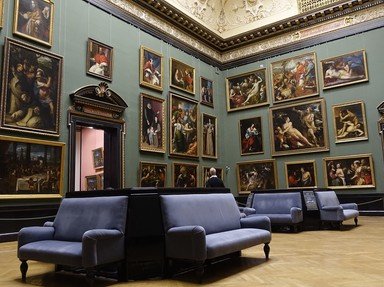
Order in the Museum! Trivia Quiz
Famous Paintings by Date
Meant as a homage to the painting selected for the June 2023 Author Gallery challenge, this quiz is dedicated to some of the most significant masterpieces that are part of the impressive collection owned by London's National Gallery.
An ordering quiz
by LadyNym.
Estimated time: 3 mins.
- Home
- »
- Quizzes
- »
- Humanities Trivia
- »
- Art
- »
- Art: By Museum